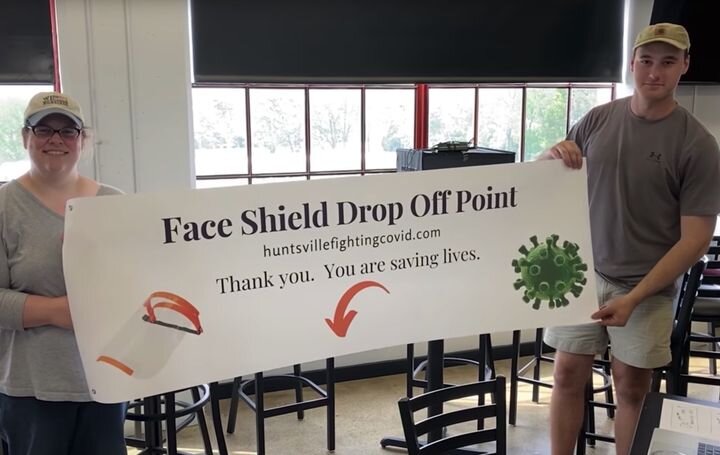Huntsville, Alabama, has a sophisticated system for producing and distributing 3D printed medical parts [Source: YouTube]![Huntsville, Alabama, has a sophisticated system for producing and distributing 3D printed medical parts [Source: YouTube]](https://fabbaloo.com/wp-content/uploads/2020/05/huntsville-cover_img_5eb065256a41f.jpg)
An important video shows many of the steps required to properly manufacture and distribute emergency medical parts.
Across the world 3D printer operators are racing to produce parts required by medical authorities. In many cases, it is the work of individuals tirelessly producing a believed-to-be-required part and dropping them off at a hospital or providing them to an individual medical practitioner.
Typically these parts are for PPE, or personal protective equipment. The most common item being produced by 3D printer farms and individual sites is a face shield, a device that fits over the head and protects the face’s skin from accidental virus exposure. In some areas these are in short supply and are desperately needed.
Problems With 3D Printed Medical Parts
While I truly admire the effort being put in by many, I fear mistakes can be made. For example, producing and delivering PPE to a hospital that contains the virus would certainly not be appreciated by medical professionals.
When you think about it more deeply, there are quite a number of other concerns well beyond the mere 3D printing of the part. Disinfection is one, but there are many others, including:
-
Is this part actually required by the specific medical institution?
-
Are there other institutions nearby that require that part more than the first one you encounter?
-
Do the medical professionals know how to use / assemble / fix the part provided?
-
How many parts are required?
-
Where should parts be delivered? Who picks up and delivers them?
And so on. It seems that the 3D printing part is the least complicated step, and if you really want to provide value, you need to figure out the answers to these and many more questions.
For 3D printer operators, the skills required to do this type of organizational work are daunting and not often available, in spite of the tremendous individual energy. You really need a substantial team of people with different skills to address the entire problem effectively, and that takes a bit of organizational management expertise.
Organizing 3D Printed Medical Parts
![Destin Sandlin [Source: YouTube]](https://fabbaloo.com/wp-content/uploads/2020/05/image-asset_img_5eb06525ab31b.jpg)
Destin Sandlin [Source: YouTube]
How can you possibly get properly organized to create a reliable, safe and effective flow of 3D printed parts to a medical community?
A new and extremely interesting video has been produced by Destin Sandlin of Smarter Every Day that describes the process he used in the city of Huntsville, Alabama to develop an effective face shield production line and delivery operation.
![Building a drying station for a disinfection line in Huntsville for 3D printed medical parts [Source: YouTube]](https://fabbaloo.com/wp-content/uploads/2020/05/image-asset_img_5eb06525e8d29.jpg)
Building a drying station for a disinfection line in Huntsville for 3D printed medical parts [Source: YouTube]
Here’s the video, which you absolutely must watch if you intend on 3D printing parts for medical professionals:
Sandlin’s team was able to rapidly develop an effective production line that includes:
-
A way to collect 3D printed parts from the public using a drive through system
-
A sophisticated disinfection line designed by professionals
-
A packaging system including wrapping, boxing and insertion of instructions for use
-
A routing and distribution system
![Huntsville’s drive through drop-off system for 3D printed medical parts [Source: YouTube]](https://fabbaloo.com/wp-content/uploads/2020/05/image-asset_img_5eb0652630a8c.jpg)
Huntsville’s drive through drop-off system for 3D printed medical parts [Source: YouTube]
If your area is still unorganized in producing 3D printed medical components, you need to quickly build a team and focus efforts by everyone. No one can do it by themselves, so go out and find the rest of your team.
Today.
Via Huntsville Fighting Covid (Hat tip to Zach)

